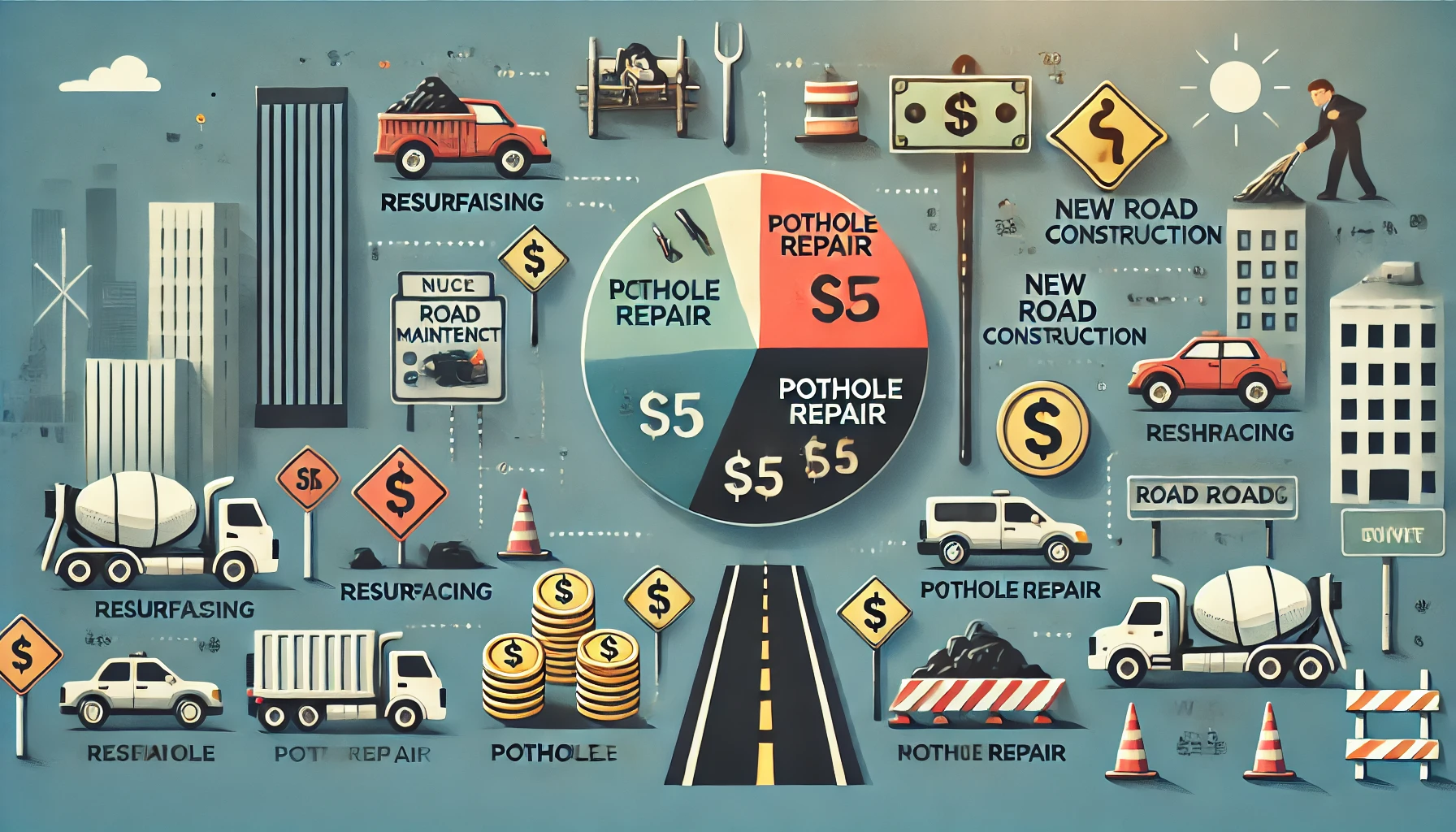Understanding Road Maintenance Funding and Budget Allocation
Maintaining our roadways is crucial for ensuring safe and efficient transportation. However, road maintenance is a complex process that requires significant financial resources. In this blog post, we will delve into road maintenance funding and budget allocation, examining how funds are generated, distributed, and used to maintain and improve our roads.
The Importance of Road Maintenance
Proper road maintenance is essential for several reasons:
- Safety: Well-maintained roads reduce accidents and improve overall safety for drivers, cyclists, and pedestrians.
- Economic Impact: Good roads facilitate trade and commerce, boosting local and national economies.
- Cost Efficiency: Regular maintenance prevents more extensive and costly repairs in the future.
- Environmental Benefits: Smooth roads reduce vehicle emissions by ensuring more efficient fuel consumption.
Sources of Road Maintenance Funding
Funding for road maintenance comes from various sources, each playing a critical role in ensuring adequate budget allocation. These sources include:
- Federal Funding: The federal government allocates funds through programs like the Federal Highway Administration (FHWA).
- State and Local Governments: State and local governments generate revenue through taxes, tolls, and bonds.
- Private Sector: Public-private partnerships (PPPs) and private investments also contribute to road maintenance funding.
Federal Funding Programs
Federal funding is a significant source for road maintenance. Programs like the Highway Trust Fund (HTF) and the Surface Transportation Block Grant Program (STBG) provide essential financial support. The HTF, funded by federal fuel taxes, is particularly crucial, as it ensures a continuous flow of resources for road upkeep and improvements.
State and Local Government Contributions
State and local governments often supplement federal funding with their revenue streams. These include:
- Gas Taxes: Taxes on gasoline and diesel fuel are primary sources of funding.
- Vehicle Registration Fees: Fees collected from vehicle registrations contribute to the maintenance budget.
- Tolls: Revenue from toll roads is often reinvested into road maintenance and infrastructure projects.
- Bonds: Governments may issue bonds to raise immediate funds for significant road projects.
Budget Allocation: How Funds are Distributed
The process of budget allocation for road maintenance involves careful planning and prioritization. Here’s how it typically works:
- Assessment of Needs: Authorities assess the current condition of roadways to determine maintenance needs.
- Prioritization: Projects are prioritized based on factors such as road usage, safety concerns, and economic impact.
- Funding Allocation: Funds are allocated to prioritized projects, ensuring the most critical needs are addressed first.
- Project Implementation: Allocated funds are used for project implementation, including repairs, upgrades, and routine maintenance.
- Monitoring and Evaluation: Ongoing monitoring ensures that projects stay on track and funds are used efficiently.
Challenges in Road Maintenance Funding
Despite the importance of road maintenance, several challenges hinder effective funding and budget allocation. These challenges include:
- Insufficient Funding: The growing need for road maintenance often outpaces available funds.
- Political Factors: Budget allocation can be influenced by political considerations, leading to uneven distribution of resources.
- Aging Infrastructure: Older infrastructure requires more extensive and costly repairs.
- Economic Fluctuations: Economic downturns can reduce available funding from taxes and other revenue sources.
Innovative Solutions for Road Maintenance Funding
To address these challenges, various innovative solutions are being explored:
- Mileage-Based User Fees (MBUF): This approach charges drivers based on the number of miles driven, providing a more direct link between road use and funding.
- Dynamic Tolling: Variable toll rates based on traffic conditions can optimize revenue generation.
- Public-Private Partnerships (PPPs): Collaborations with the private sector can bring additional resources and expertise to road maintenance projects.
- Technology Integration: Utilizing technology for efficient monitoring and maintenance planning can reduce costs and improve outcomes.
Road maintenance funding and budget allocation are critical components of a sustainable transportation infrastructure. By understanding how federal, state, and local governments generate and allocate funds, we can better appreciate the complexity of maintaining our roadways. Effective budget allocation ensures that resources are directed toward the most critical projects, enhancing safety, reducing long-term costs, and supporting economic growth. Innovative solutions, such as mileage-based user fees and public-private partnerships, offer promising avenues for addressing funding challenges and ensuring the longevity of our transportation networks.
Conclusion
In conclusion, road maintenance funding and budget allocation are vital for the safety, efficiency, and longevity of our transportation infrastructure. While challenges exist, innovative approaches and careful planning can help ensure that our roads remain in good condition. Understanding the intricacies of funding sources and allocation processes is essential for stakeholders and the general public alike. By staying informed and supporting sustainable funding initiatives, we can contribute to a well-maintained and efficient transportation system.
Key Takeaways:
- Sources of Funding: Federal programs, state and local governments, and the private sector all contribute to road maintenance funding.
- Budget Allocation Process: Involves assessing needs, prioritizing projects, allocating funds, implementing projects, and monitoring outcomes.
- Challenges and Solutions: Insufficient funding, political factors, and aging infrastructure are challenges that can be addressed through innovative solutions like mileage-based user fees and public-private partnerships.
Maintaining our roads is a shared responsibility that requires continuous effort and investment. By understanding and supporting effective funding and allocation strategies, we can ensure a safer, more efficient, and sustainable transportation network for the future.


